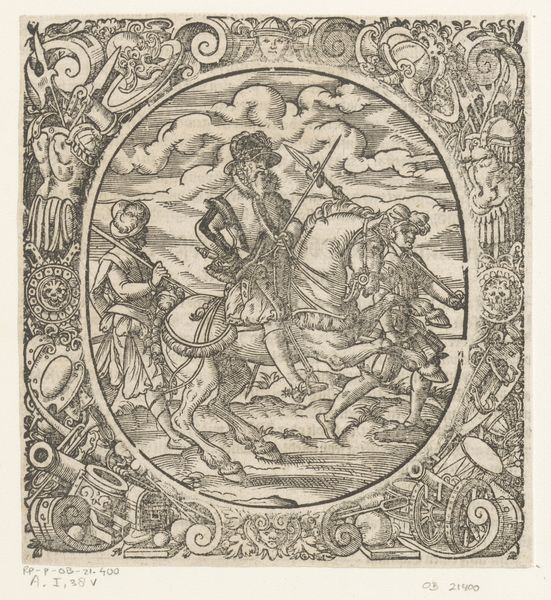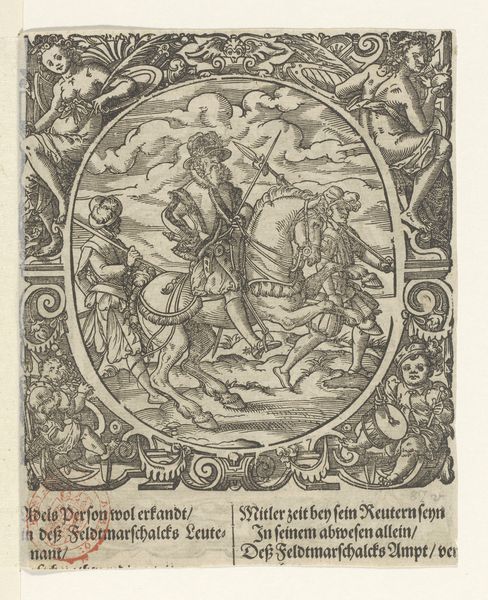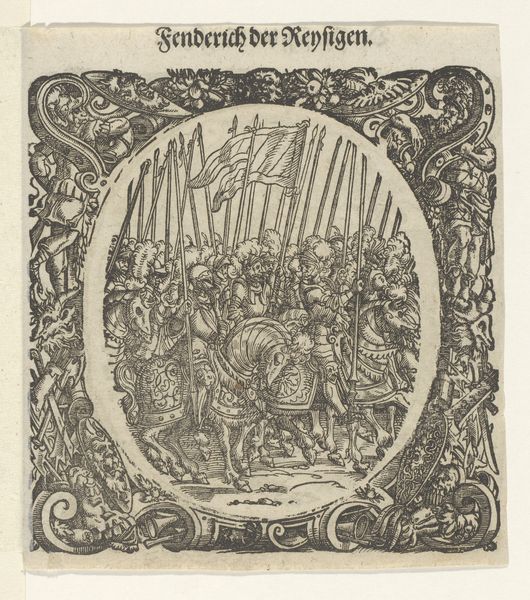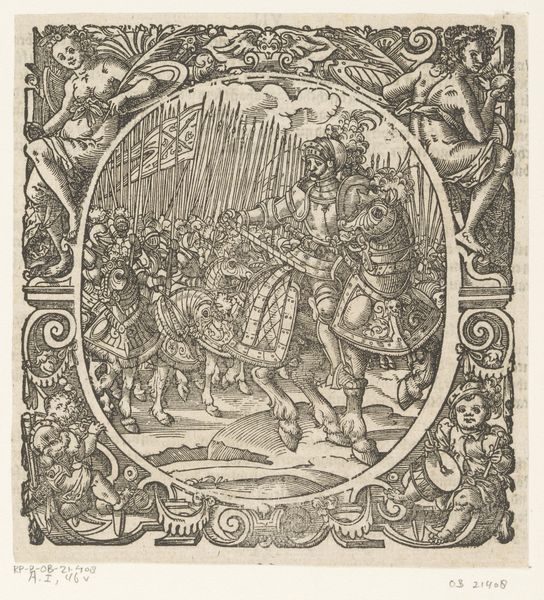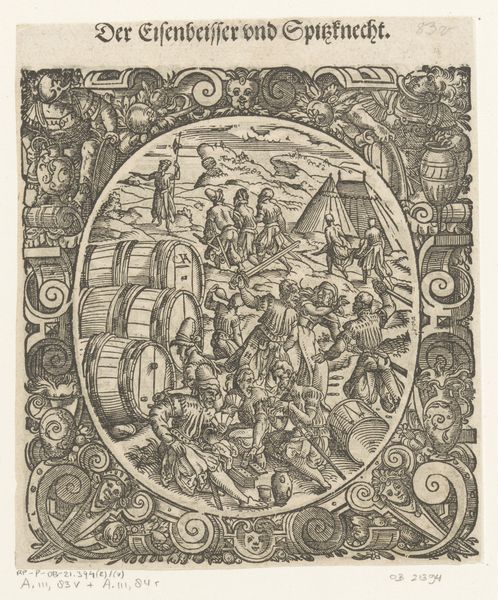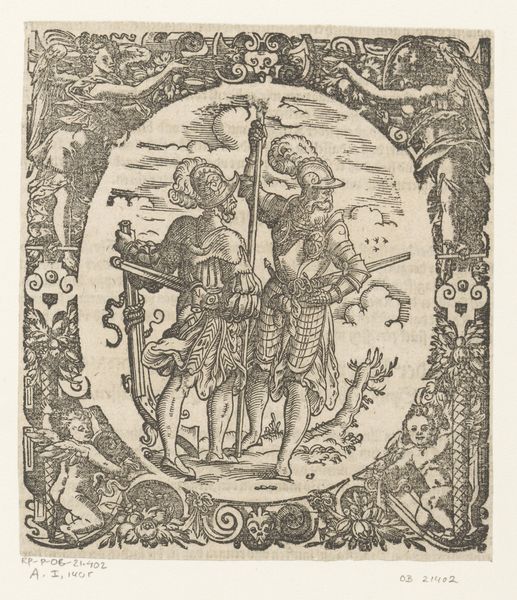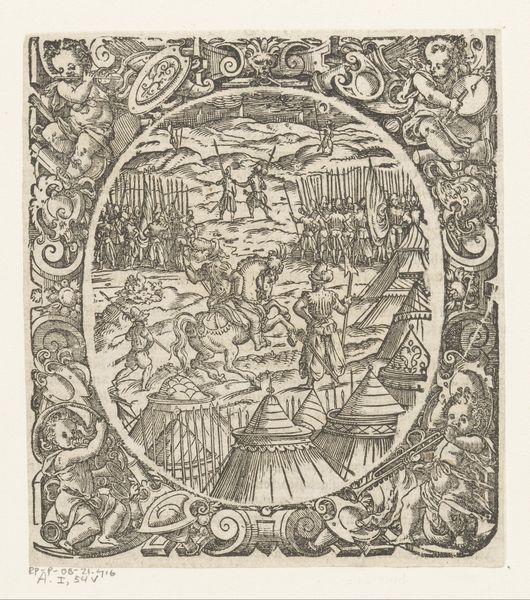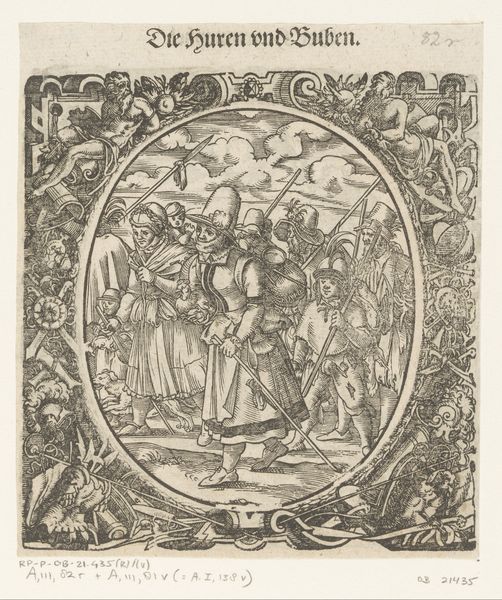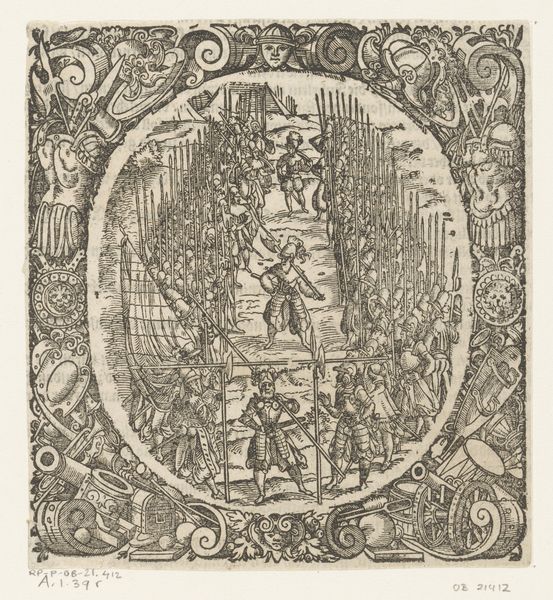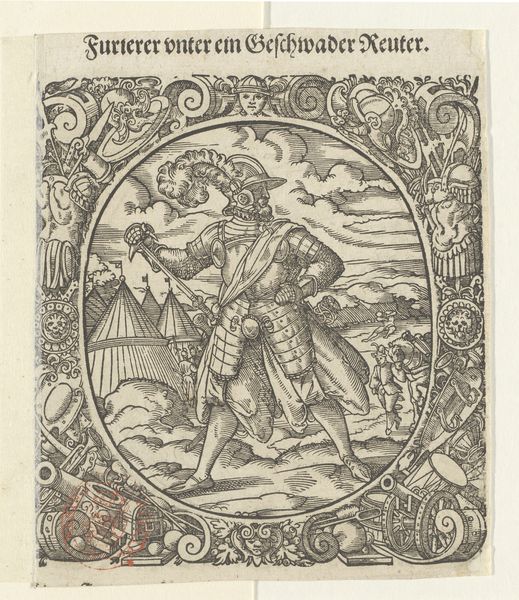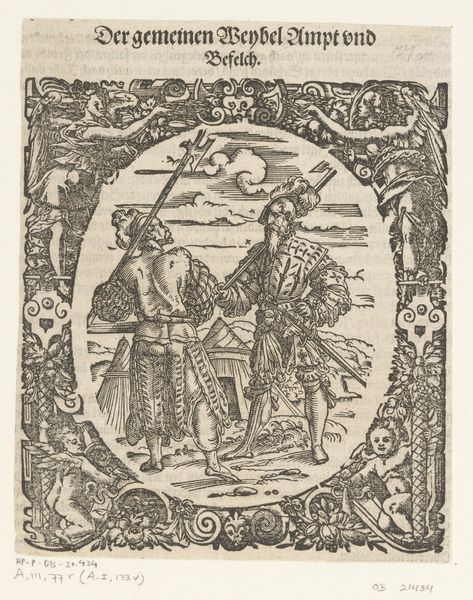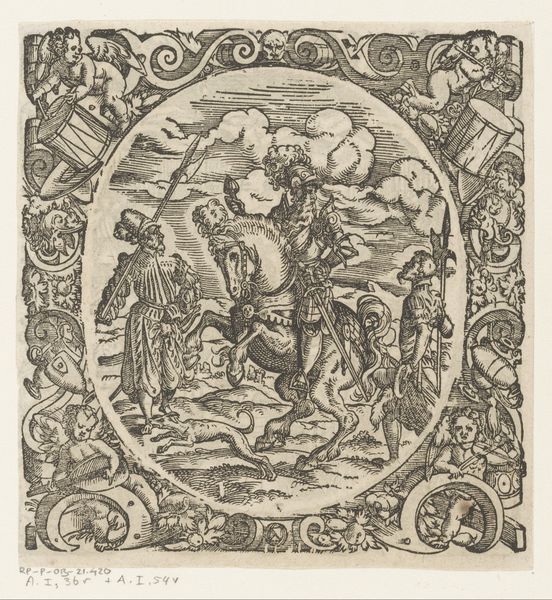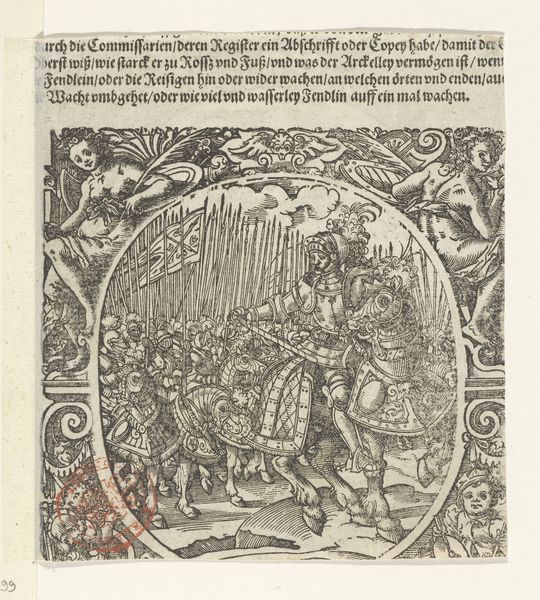
drawing, print, ink, engraving
#
drawing
#
comic strip sketch
#
pen drawing
# print
#
pen illustration
#
pen sketch
#
old engraving style
#
11_renaissance
#
personal sketchbook
#
ink
#
pen-ink sketch
#
pen work
#
sketchbook drawing
#
history-painting
#
coloring book page
#
engraving
Dimensions: height 142 mm, width 132 mm, height 113 mm, width 100 mm
Copyright: Rijks Museum: Open Domain
Curator: This intriguing engraving, titled "Brandmeester," was created by Jost Amman in 1573 and is now part of the Rijksmuseum's collection. Editor: Immediately, I'm struck by the density of detail. It feels incredibly tactile, the thicket of lines creating real visual texture. What exactly am I looking at? Curator: The title "Brandmeester" translates to "Fire Master," and it depicts just that – a figure, centrally mounted on horseback, brandishing a torch against a backdrop of what appears to be a burning city. The surrounding border is elaborately adorned with arms and other military implements. Editor: It's fascinating to consider the material realities of printmaking in the 16th century. The labour involved in creating these fine lines on a copper plate. It makes me think about accessibility of these images. Were they intended for mass consumption or a more elite audience? And what kind of ink was used? Curator: The affordability would depend, but the proliferation of prints at this time absolutely shaped public opinion and the dissemination of news. Think about the role this played in representing warfare, religious conflict. How images circulated had real consequences. Editor: Looking at the figure of the Brandmeester himself, the level of detail is astonishing. His armor, the horse’s trappings – you can almost feel the weight of them. It begs the question, who commissioned it and what sort of socio-political environment gave rise to its creation and demand? Curator: Consider the period - the late Renaissance, the rise of nation-states, the constant warfare and political instability in Europe. Images of military leaders would play an important role in defining loyalty, or warning of consequences for opposing the current order. A piece like this, then, is doing political work. Editor: Right, propaganda almost. It's a powerful reminder that art of all mediums – from grand painting to something as seemingly quotidian as an engraving like this – isn’t made in a vacuum. There is an audience with tastes, demands, and material requirements that influences it. Curator: Exactly, analyzing it this way reveals much about the cultural moment of its making and reception. Editor: Thinking about how labor shaped cultural and political dynamics in society provides such depth when studying an artwork, giving it an interesting voice. Curator: And thinking of an artwork's historical significance can truly broaden our perspective.
Comments
No comments
Be the first to comment and join the conversation on the ultimate creative platform.

